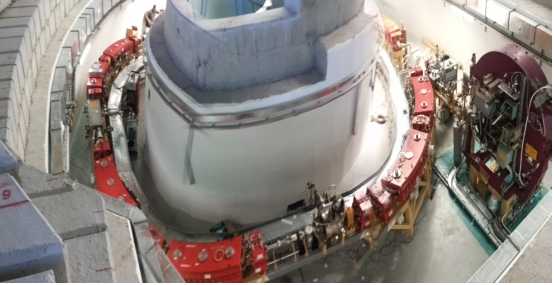
After having successfully stored electrons from the 20 MeV Microtron in the Booster in July 2014, on 3 September 2014, the SESAME team succeeded in accelerating the electrons in the Booster to their final energy of 800 MeV.
The SESAME Injector consists of a 20 MeV Microtron and the 800 MeV Booster-Synchrotron. Electrons are produced in the Microtron where they are accelerated to 20 MeV (Million Electron Volt), and these electrons are then transferred to the Booster-Synchrotron.
SESAME’s Microtron became operational in 2012, installation of its Booster was completed in 2013, and storage in the Booster, in July 2014, of the electrons from the Microtron meant that they were then circulating several million of turns in the Booster at their initial energy of 20 MeV.
These electrons have now been accelerated from 20 to 800 MeV, which is the final energy of the Booster. This was done by increasing the magnetic field in the Booster Magnets and feeding microwave power into an accelerating unit (cavity), steering the beam in the center of the vacuum chamber and keeping all this synchronized.
Successfully having brought SESAME’s Booster to full operation is of particular significance since this is the first high-energy accelerator in the Middle East, and this achievement with the Booster is to be attributed to a team of young scientists and technicians from the region for whom accelerator technology is a new field. They were led in this work by Erhard Huttel, the Technical Director of SESAME.
This success will open the path for the final goal, which is to make SESAME the first operational Synchrotron Light Source in the Middle East and to confirm its position as a truly international research center.
When the facility starts operations (probably in early 2016), scientists from the Middle East and neighbouring countries, in collaboration with the international synchrotron light community, will have the possibility of performing world-class scientific studies: for example, to determine the structure of a virus to improve medical remedies, to get insight into the interior and the three-dimensional micro-structure of objects such as materials of interest to cultural heritage and archaeology, and to investigate magnetisation processes which are highly relevant for magnetic data storage, to cite just a few examples of the vast scientific potential of SESAME.

